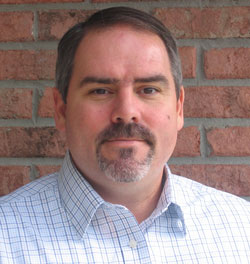
From the Editor - Takeaways from Haulage & Loading 2009

The conference led with a session that included presentations on haul road design, the interaction between the road and haul trucks, and in-pit crushing and conveying systems (IPCC). To stand in front of a crowd of mine operators and truck makers who are mentally conditioned to constantly improve the truck-shovel mining process and talk about IPCC, takes bravery. IPCC is a competitive form of haulage that either shortens the haul distance or eliminates trucks entirely in favor of conveyors. Jeff Duvall from Snowden, a consulting firm that recently completed a comparison study of IPCC, skillfully discussed the results and fielded some tough questions. Granted, the drop in petroleum prices stole some of his thunder, but many mines are seriously considering some form of IPCC.
One delegate joked that the theme could have been: Mining Safer, Cheaper and Greener. In addition to talking about improved safety and cost savings, the IPCC presentation along with several others mentioned a reduced carbon footprint. Several vendors these days are touting their systems, whether it be IPCC, conveyors in general, or trolley-assist for haul trucks as a more “environmentally friendly” option. The mine would generate less emissions; however, unless the mine draws power from a nuclearpowered grid, the emissions are simply transferred to the power plant through increased electricity usage. Depending on the cost, availability and reliability of electricity, these technologies would make sense economically in a world of excessively high oil prices, despite the environmental attractiveness.
A panel discussion, “Operating Safely in a Low Cost Environment,” delved into the sensitive area of holding costs to a minimum without compromising safety. The panel included two mine operators, a safety consultant and a mining equipment vendor. Delegates heard a great deal of advice, which included firsthand experience from mine operators. Ruben Griffith from Freeport, one of the largest mining companies, talked about some of the measures they were taking to ensure that their managers were… managing. Among the austere initiatives he noted was the novel idea of taking the computers away to move them beyond answering E-mail all day and out into the field. Now they carry a clipboard and a two-way radio and they are actively observing and managing in the pits.
During the next year, E&MJ will publish many of the presentations from the conference. In the meantime, Mining Media will construct a Haulage & Loading reading room on its Web site (www.mining-media.com) where E&MJ readers can access the PowerPoint presentations along with MP3 files. If the conference delegates took away one idea that prevented an accident or saved their parent company some money, then Mining Media considers the Haulage & Loading conference a success.

Steve Fiscor, Editor-in-Chief,
E&MJ